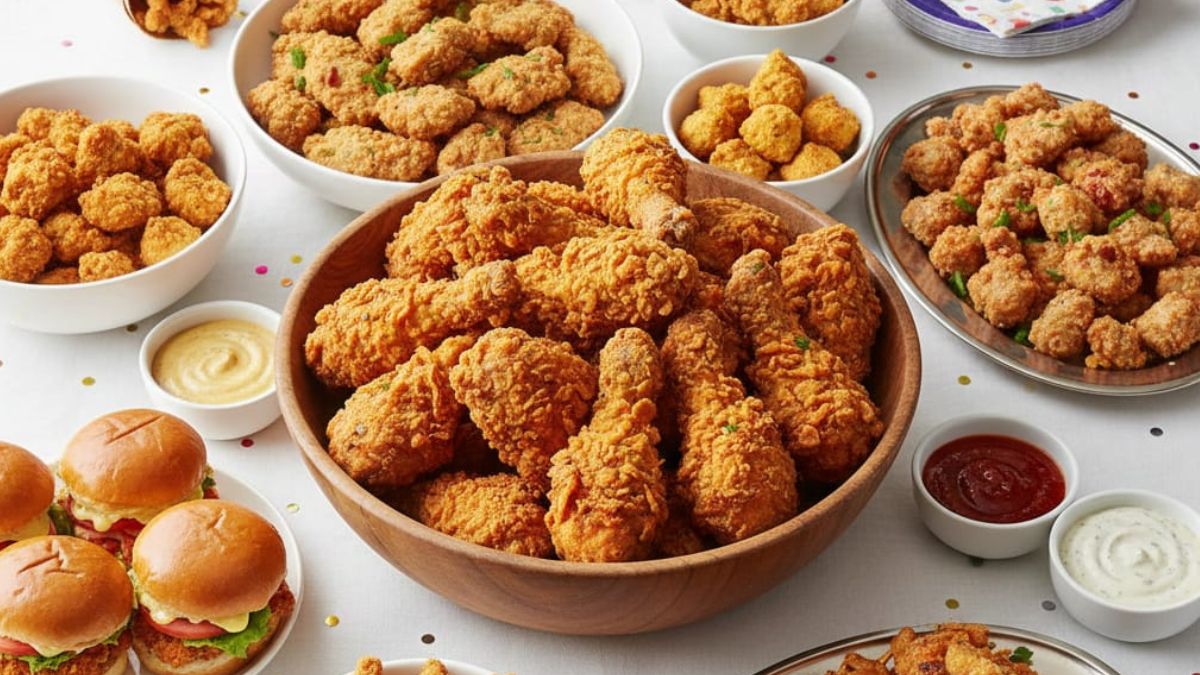The construction and eating of this many-layered Christmas classic is a very important business. What's your idea of terrific trifle?
Christmas time, mistletoe and ... trifle. That's how the song goes, doesn't it? If not, it should. Because this pre-prep showpiece is a cornerstone of what - through gritted teeth - I am journalistically obliged to refer to as (god, doesn't this sound horrific) party season. This boozy, creamy construction is no mere - what's the word I'm looking for? - trifle, but a true classic. A fitting subject for this seasonal instalment of How To Eat.
What's How To Eat, you ask? It's a series seeking to establish informal rules of good gastronomic conduct for some of the nation's favourite dishes. It is written in a spirit of fun and frequently taken far too seriously. For instance, below the line, someone will definitely ask: "No jelly! No f*%£ing jelly!? Who does he think he is, the jelly police?" To which, I can only say: yes. I am. Deal with it. Step away from the Rowntree's and keep your hands where I can see them.
Base
How low can you go? Pretty low. To the point of getting rid of it altogether. As most supermarkets do, by selling trifles with a base of jelly and mixed fruit. But, come on, people, it's Christmas, let's do this properly.
Well, to a point. Trifle is a matter of construction not cooking. It's meant to be a luxurious show-stopper that you can knock up with minimum fuss. While Madeira cake or similar is the ideal base, there is no need to bake your own. Or turn the cooker on at all for that matter.
Why Madeira? Because, its residual taste aside, you want a cake that is dense enough to absorb plenty of fruit juices without it becoming overly wet and mushy. It needs to retain its integrity yet be soft enough that you can smoothly spoon it out. You'll find everything from panettone (I don't want to be picking raisins and candied fruit out of my zuppa Inglese) to Christmas cake (!) recommended, but the worst offenders here are swiss roll (which takes on a strange mealy texture when damp) and sponge fingers, in the boudoir or ladyfingers style.
The latter often have an odd, rusk-like texture (interestingly, according to Wikipedia, they're often given to teething babies), are too sweet and their sugar-coated edges bring a crispiness into play that you don't want in a trifle (see also amaretti). Bleugh!
Fruit
Firstly, it must be soft enough that it will release its juices when gently compressed (no banana, kiwi, mango, bland, hard, size-13-carbon-footprint strawberries etc.), and secondly it must be tart or flavourful enough to offset all that rich custard and cream. Blandly sweet fruit will not cut it.
In theory, this opens up endless possibilities. Particularly if you - hey, put that pan down! - turn the cooker on. Last year, Felicity Cloake, a font of wisdom on most matters, recommended cooking dried fruit with cinnamon and cloves to give your trifle a Christmassy twang. I can see where she's coming from. But this isn't a mince pie. You could get creative: stewing rhubarb with ginger, cooking apples with calvados, spiced pears in red wine or port. The fruit-alcohol variations, cooked and uncooked, are almost endless. But this is a lot of work when there is a perfectly good solution sitting in the freezer cabinet in your local supermarket.
Frozen dark summer fruits. Raspberries, blackberries, blueberries even, that is what you want, oozing purple-scarlet juices. And they barely need defrosting before you'll be able to give them a light massage with a fork, to get things moving. A bit of complementary jam on your cake base - the best you can afford, it is Christmas - will add nice depth to the final trifle.
Jelly
No. Unless you're trying to bulk it out to keep the cost* down. Texturally a gelatinous layer will be at odds with whatever cake base you're using and, surely, if you're trying to create a luxurious Christmas treat, the cheap, industrially manufactured fruit flavours of a 42p packet of jelly will jar unsatisfyingly with your chosen fresh/ frozen fruit.
*If you need to use jelly, I'd say, go the whole 1980s hog: jelly and a tin of fruit cocktail. At least, that way, it will have nostalgia on its side (a powerful stimulant in eating, ask Heston), if only for the Revels-like roulette of which fruits (gooseberries, Christ alive!) you will find in there.
Custard
Trifle is contradictory. It is meant to feel luxurious. But it does tolerate corner-cutting. If not actively encourage it. You do not need to make your own custard. You certainly do not need to slave over some delicately flavoured creation whose subtle podded vanilla or cardamom flavours will be lost amid all that booze and fruit. Buy a decent readymade custard, or use Bird's. It's fine. More importantly, make sure that your trifle bowl is sufficiently deep - and this goes for the cream, too - that you can pour it in to a depth of about three fingers. No parsimonious one-finger layers.
Cream
Accept no dairy substitute: no Elmlea, no Dream Topping, and definitely no squirty cream. The latter is particularly unwelcome as it has none of the necessary density and, as you invariably make trifle ahead of time, may well have flopped, lost its va va voom, by the time you come to serve. You want a thick, choppy sea of whipped double cream on top, not something that looks like a thin aerosol sneeze. Plus, it tastes rank.
Booze
Now, if you've gone off-piste with a chocolate cherry trifle (kirsch), a chocolate orange (Cointreau and Tia Maria) or pineapple based creation (Malibu), you will be led, quite possibly astray, by your theme. But if you've taken the classic fruit route, it's got to be sherry (medium-sweet, if not dry) or, possibly, light rum. Brandy or blended whisky work, but do you really want to use them to lace a pudding? Key point: be discreet with the booze. Think dressing, not drowning. It's not meant to singe your eyebrows. Many recipes suggest 20ml+ per person. I say ease back.
Toppings
Flaked almonds. Not hundreds and thousands, not candied fruit, not glacé cherries, and not, at the other end of the spectrum, clanging pistachios, OTT zested lemon or irritating pomegranate seeds. Seriously, does anyone really like pomegranate seeds? In anything? Flaked almonds, toasted if you like, are the way to go. Possibly, crushed toasted hazelnuts (not too many, mind) or even walnuts if you need to get that slightly acrid nutty flavour and texture contrast from another source.
Serving
The trifle itself demands a huge glass bowl. But am I the only person who has a problem with glass bowls to eat from? Clanging spoons; no surface grip; often streaked and dusty because they have been sat in a cupboard for a year, and even when they are clean, I still suspect they're not. Particularly ones that are bevelled and patterned on the outside in a clear invitation to breeding bacteria. It's a hang-up, and I can see the aesthetic advantage of serving in glassware, but no, it's not for me. *shudders*
Give me a small white deep dessert / cereal bowl (see, How To Eat breakfast cereal), crammed with trifle. And don't, whatever you do, lazily dump it in the bowl cream-side down. That is unforgivably amateurish. The sponge is definitely the utilitarian end of this dessert. Who wants to be presented with that? Plus, one of life's great pleasures is scraping back a section of the cream and piercing the custard's smooth "skin" with a spoon. (A psychologist could have a field day with all this, couldn't they?)
When to eat
At the end of any meal / buffet, and, of course, straight from the serving bowl / fridge, next morning. Trifle is soothing hangover food of the gods.
So, trifle, how do you eat yours?
Photo source: Thinkstock









